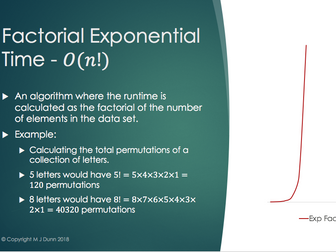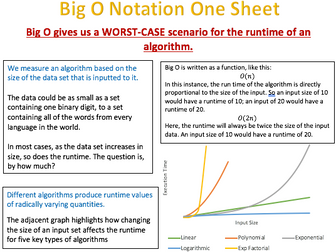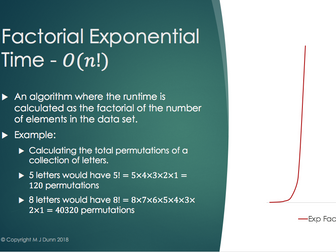A Level Big O Notation Theory
<p>A presentation comprehensively addressing the topic of Big O.</p>
<p>The requirement for measuring algorithmic complexity is discussed along with multiple different metrics that could be employed to achieve this. Ultimately, the reasoning behind Big O is revealed and pupils guided as to why this metric is the most universally appropriate.</p>
<p>Big O is comprehensively discussed, including how the data set size influences runtime and a range of different forms of Big O.</p>
<p>This includes:</p>
<ol>
<li>Constant Time</li>
<li>Linear Time</li>
<li>Polynomial Time</li>
<li>Exponential Time</li>
<li>Factorial Exponential Time</li>
<li>Logarithmic Time</li>
</ol>
<p>In each form, an example algorithm is provided to offer some context to the scenario. A visual representation of runtime with increasing data set sizes is also included for each, as is a visual comparison for each of the algorithms.</p>
<p>Finally, the reason why Big O is important is addressed.</p>
<p>There are 30 slides in this presentation, providing theory only. Exercises and run-throughs can be found in other uploads on my account.</p>


